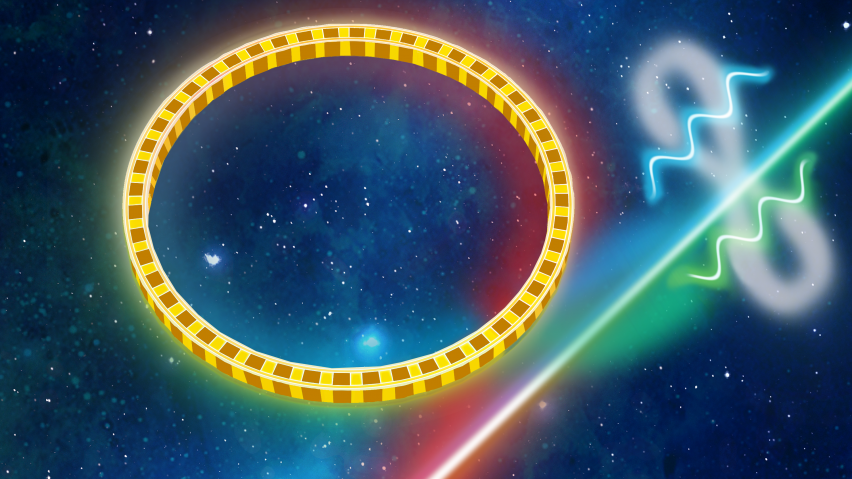Dec 18 2020
Numerous aspects of the day-to-day lives of humans can be completely transformed by super-fast quantum computers and communication devices.
 Yuping Huang and colleagues at Stevens Institute of Technology demonstrate a quantum circuit that can readily be integrated with other optical components, paving the way for high-speed, reconfigurable and multifaceted quantum devices. Image Credit: Stevens Institute of Technology.
Yuping Huang and colleagues at Stevens Institute of Technology demonstrate a quantum circuit that can readily be integrated with other optical components, paving the way for high-speed, reconfigurable and multifaceted quantum devices. Image Credit: Stevens Institute of Technology.
However, to achieve that, researchers first require a fast, efficient source of entangled pairs of photons used by such systems to transmit and manipulate information.
At Stevens Institute of Technology, scientists have recently performed exactly that. They have developed a chip-based photon source that is 100 times more efficient compared to earlier ones. The study could enable massive quantum device integration to be realized soon.
It’s long been suspected that this was possible in theory, but we’re the first to show it in practice.
Yuping Huang, Gallagher Associate Professor of Physics, Stevens Institute of Technology
Huang is also the director of the Center for Quantum Science and Engineering.
Researchers create photon pairs by trapping light in cautiously sculpted nanoscale microcavities. When light circulates within the cavity, its photons tend to resonate and split into entangled pairs.
However, there is a drawback: currently, such systems are highly inefficient and need a torrent of incoming laser light with several million photons before a single entangled photon pair can reluctantly drip out at the other end.
Now, Huang and his team at Stevens have created a new chip-based photon source that is 100 times more efficient compared to any earlier device, thus enabling tens of millions of entangled photon pairs to be produced within a second by using a single microwatt-powered laser beam.
“This is a huge milestone for quantum communications,” added Huang, whose study was published in the December 17th, 2020, issue of Physical Review Letters.
Huang collaborated with Stevens graduate students Zhaohui Ma and Jiayang Chen to advance his laboratory’s earlier study to develop extremely high-quality microcavities into flakes of lithium niobate crystal. The cavities are racetrack-shaped and internally reflect photons with minimal energy loss, thus allowing light to circulate longer and interact with greater efficiency.
The fine-tuned additional factors like temperature and successfully made an unmatched bright source of entangled photon pairs. In practical terms, that enables photon pairs to be created in much higher quantities for a specified amount of incoming light, thereby drastically minimizing the energy required to drive quantum components.
The researchers have been working on techniques to further tune their process and add that they expect to achieve soon the true Holy Grail of quantum optics—a system with the ability to convert a single incoming photon into an entangled pair of outgoing photons, with almost zero energy waste along the way.
It’s definitely achievable. At this point we just need incremental improvements.
Jiayang Chen, Graduate Student, Stevens Institute of Technology
In the meantime, the researchers plan to continue fine-tuning their technology and looking for ways to use their photon source to power logic gates and other quantum computing or communication components. “Because this technology is already chip-based, we’re ready to start scaling up by integrating other passive or active optical components,” noted Huang.
According to Huang, the ultimate aim is to make quantum devices so cost-effective and efficient to operate that they can be combined into mainstream electronic devices.
We want to bring quantum technology out of the lab, so that it can benefit every single one of us. Someday soon we want kids to have quantum laptops in their backpacks, and we’re pushing hard to make that a reality.
Yuping Huang, Gallagher Associate Professor of Physics, Stevens Institute of Technology